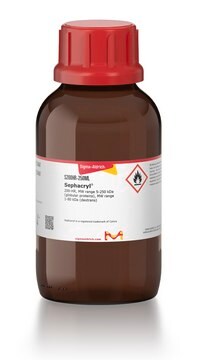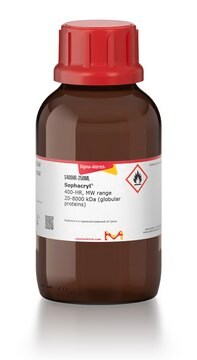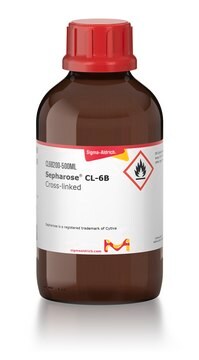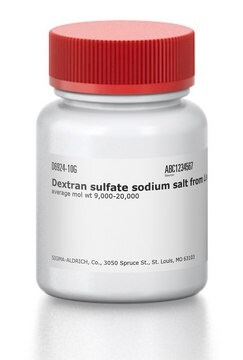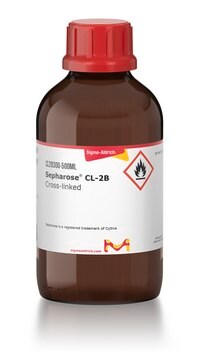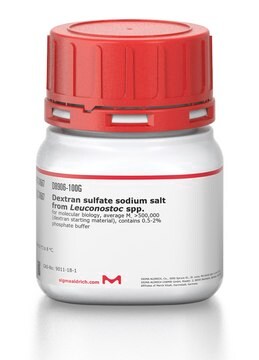S500HR
Sephacryl® Size Exclusion Resin
500-HR, MW range 40-20,000 kDa (dextrans)
Synonym(s):
Poly([allyl dextran]-co-N,N′-methylenebisacrylamide)
About This Item
Recommended Products
Product Name
Sephacryl®, 500-HR, MW range 40-20,000 kDa (dextrans)
Quality Level
description
stability: stable to 0.2M NaOH
form
suspension (20% aqueous ethanol)
feature
autoclavable
matrix
crosslinked allyl dextran/N,N′-methylenebisacrylamide copolymer
particle size
25-75 μm (wet)
pore size
40-20,000 kDa MW range (dextrans)
compatibility
mode of use size exclusion chromatography
storage temp.
2-8°C
Looking for similar products? Visit Product Comparison Guide
General description
- Supplied swollen, suspended in 20% aqueous ethanol
- Autoclavable
- Stable to 0.2N sodium hydroxide (NaOH)
- Store at refrigerated temperature (2-8 °C)
Application
Legal Information
Signal Word
Warning
Hazard Statements
Precautionary Statements
Hazard Classifications
Flam. Liq. 3
Storage Class Code
3 - Flammable liquids
WGK
WGK 1
Flash Point(F)
100.4 - 109.4 °F - closed cup
Flash Point(C)
38 - 43 °C - closed cup
Personal Protective Equipment
Choose from one of the most recent versions:
Already Own This Product?
Find documentation for the products that you have recently purchased in the Document Library.
Our team of scientists has experience in all areas of research including Life Science, Material Science, Chemical Synthesis, Chromatography, Analytical and many others.
Contact Technical Service